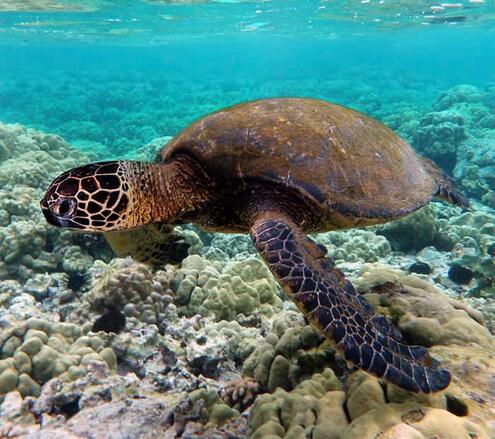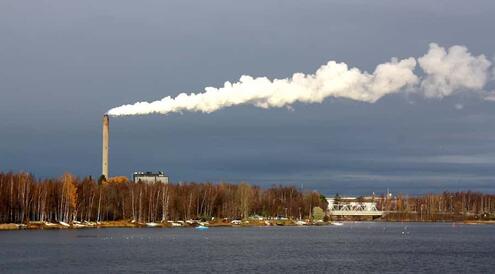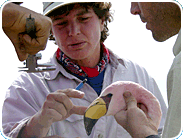Conservation biologist Felicity Arengo answers this question:
Hi Frances,
That's a very timely question. We often hear about endangered animals in the news, and how we can protect them.
An animal is called endangered when there are so few of its kind left that it is in danger of becoming extinct — disappearing from the world forever. There are many reasons that animals and plants can become endangered or die out altogether.
Since Earth began 4.5 billion years ago, it has been continually changing. Most often, this change is very, very slow—like the rising of mountains or draining of seas. Over millions of years, these gradual changes can impact individual species so much that they can no longer survive in the new conditions of their changing habitat.

Green sea turtles are endangered.

A meteor impact contributed to Earth's fifth mass extinction.
Rarely, a drastic and sudden change in the environment causes a mass extinction, which is when a huge number of species disappear altogether. For example, around 65 million years ago, a large meteor hit Earth. This impact contributed to the mass extinction of over 50% of species alive at the time!
This was just one of the five mass extinctions in Earth's history. All were caused by dramatic events — such as meteor impacts, changes in Earth's climate, and massive volcanism — that resulted in severe environmental changes. Our planet is now experiencing its sixth major extinction.
The current extinction is most likely the result of human activity, especially over the past century. Scientists estimate that 100 to 10,000 species — from microscopic organisms to large plants and animals — go extinct each year. This is 100 to 1,000 times faster than historic extinction rates. Species can become extinct when humans over hunt and over fish, pollute the environment, destroy habitats , and introduce new species to areas.

Factories can pollute the air and the oceans.
Conservationists around the world are working to address these problems and think of ways to protect endangered animals and their habitats.
You Can Make a Difference!
- Find out How to Help Biodiversity with this checklist.
Explore More:
- Discover how scientists are Saving Species through their fieldwork.
- Find out more about what's causing extinction in Going, Going... Gone?




 Biodiversity
Biodiversity
 Brain
Brain
 Genetics
Genetics
 Marine BiOLogy
Marine BiOLogy
 MicrobiOLogy
MicrobiOLogy
 PaleontOLogy
PaleontOLogy
 ZoOLogy
ZoOLogy
 AnthropOLogy
AnthropOLogy
 ArchaeOLogy
ArchaeOLogy
 Astronomy
Astronomy
 Climate Change
Climate Change
 Earth
Earth
 Physics
Physics
 Water
Water


